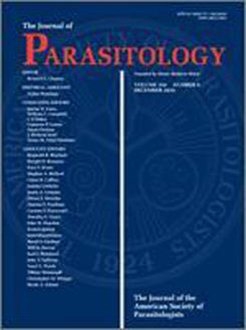Stable isotope analyses of carbon and nitrogen (δ13C and δ15N) are useful for elucidating consumer relationships of free-living organisms, as carbon isotopes indicate dietary carbon sources and incremental increases in nitrogen isotopic enrichment are correlated with increases in trophic position. However, host–parasite relationships are more difficult to interpret using isotopes, as data from different host–parasite systems rarely show any consistent pattern. This inconsistency of pattern reflects the complexity of host–parasite relationships, but also the scarcity of data from a diverse assemblage of host–parasite systems. We present stable isotope data from a host–parasite system including 2 ecologically contrasting helminths, an acanthocephalan (Filisoma filiformis) and a digenetic trematode (Enenterum sp.), which co-occur in the intestine of the same marine fish (Kyphosus bigibbus), the diet of which consists almost exclusively of macroalgae. We obtained δ13C and δ15N data from K. bigibbus muscle, stomach contents, and pooled infrapopulations of Enenterum sp. and F. filiformis. Consistent with other isotope studies including acanthocephalans, F. filiformis was depleted in δ13C and δ15N relative to K. bigibbus. Although Enenterum sp. exhibited values for δ13C similar to those for F. filiformis, they were enriched in δ15N relative to the acanthocephalan, with a signature similar to that of K. bigibbus. These findings are discussed within a host–ecosystem context, highlighting the importance of considering species-specific biology when interpreting host–parasite relationships using stable isotopes. Our study adds to the growing body of literature indicating that absorptive feeders, such as acanthocephalans, are typically depleted in δ13C and δ15N relative to their hosts, whereas trematodes, with a greater diversity of feeding opportunities, exhibit a wide variety of isotopic signatures across life stage and different host–parasite systems.
How to translate text using browser tools
17 September 2021
Stable Isotope Signatures of an Acanthocephalan and Trematode from the Herbivorous Marine Fish Kyphosus bigibbus (Perciformes: Kyphosidae)
Daniel C. Huston,
Thomas H. Cribb,
Rachel L. Welicky
ACCESS THE FULL ARTICLE

Journal of Parasitology
Vol. 107 • No. 5
October 2021
Vol. 107 • No. 5
October 2021
Acanthocephala
carbon
Cavisomatidae
Digenea
Enenteridae
food webs
Host–parasite interactions





